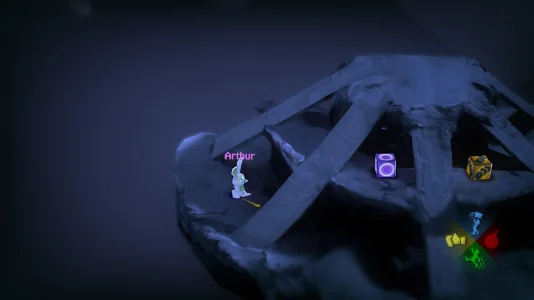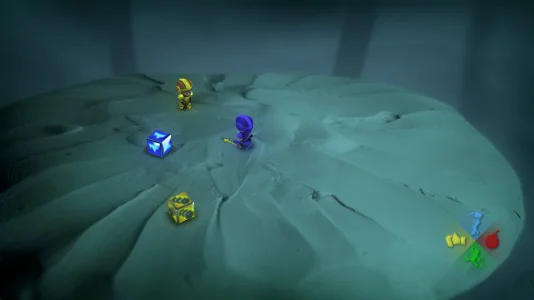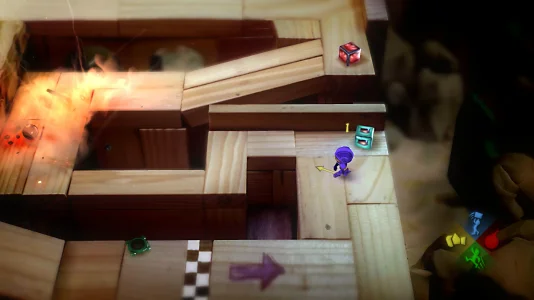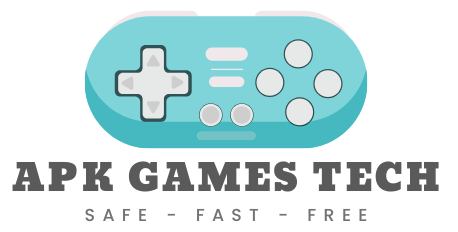Download BombSquad MOD Quick
BombSquad is a physics-based party game developed and published by Eric Froemling. The game’s core concept involves a collection of multiplayer mini-games where up to eight players compete in small arenas. Players utilize bombs, melee combat, and environmental hazards, all governed by a prominent ragdoll physics engine, to defeat their opponents. The gameplay supports various modes, including team-based, free-for-all, and cooperative challenges against AI.
Preview Images



About This Game
An In-Depth Analysis of BombSquad: Mechanics, Modes, and Technical Specifications
The video game BombSquad is a multiplayer-centric, physics-based party game created by the independent developer Eric Froemling. First released in 2011, this title presents a collection of chaotic mini-games where players compete in vibrant, diorama-like arenas. The game's core gameplay is defined by its advanced ragdoll physics engine, which ensures that every interaction, from explosions to melee combat, produces unique and often humorous results. This analysis provides a comprehensive overview of *BombSquad*, focusing on its development, gameplay systems, technical requirements, and community ecosystem, with specific attention to the Android application package (APK) for mobile users. It is important to distinguish this game from other similarly named products, such as *Bomb Squad Academy* or the physical board game *Bomb Squad*, as all information herein pertains exclusively to the title by Eric Froemling.Development, Genre, and Platform History
The development and publication of *BombSquad* were handled solely by Eric Froemling, a defining characteristic that underscores its status as a long-term independent passion project. This singular creative control has influenced the game's design philosophy and distribution strategy over its decade-plus lifespan. The title is primarily classified within the Party and Minigame genre, incorporating strong elements from the Action and Arcade categories. Its design focuses on short, objective-based rounds that support up to eight players, solidifying its identity as a social and competitive experience. *BombSquad* has a staggered and extensive release history, demonstrating an adaptive strategy that brought the game from niche platforms to broader markets. The initial launch occurred on Mac and iOS on October 20, 2011. This was followed by a port to the indie-focused OUYA console on June 27, 2013. The game's reach expanded significantly with its release for the Android platform on September 17, 2014. Subsequently, Eric Froemling ported the game to PC VR via the Oculus Rift on May 1, 2015, and later launched a native build for PC (Windows) on June 16, 2016. This continuous effort has kept the game relevant across evolving technological landscapes.Core Gameplay Mechanics and Control Systems
The gameplay loop in *BombSquad* is designed for accessibility and immediate action. Players control a cartoonish character with a simple set of actions: moving, jumping, punching, picking up objects, and deploying bombs. The game's depth emerges from the creative application of these simple actions within its dynamic physics engine. Matches are unscripted sequences of chain reactions and comical ragdoll tumbles, where every action has an unpredictable consequence.Fundamental Actions and Power-Ups
Players navigate the arenas using a virtual joystick or D-pad. A crucial but not immediately obvious mechanic is running, which is executed by pressing and holding the jump button. A simple tap of the jump button produces a short hop. The primary offensive actions include a quick punch to stun opponents, the ability to pick up and throw objects or other players, and the signature bomb drop. The strategic landscape of each match is frequently altered by power-up crates that periodically appear, containing game-changing items.- Specialized Bomb Types: These items replace a player's standard bomb. Varieties include Sticky Bombs that adhere to surfaces and players, Ice Bombs that freeze opponents solid, Impact Bombs that detonate on contact, powerful TNT crates for large-scale destruction, and Land Mines for tactical area denial.
- Wearable Enhancements: Players can also find items to equip. Boxing Gloves substantially increase punching power and knockback, while Energy Shields provide a temporary buffer to absorb incoming damage.
Controller Support and the 'BombSquad Remote' Application
A cornerstone of *BombSquad*'s design philosophy is its exceptional support for a diverse array of input devices, which removes a common barrier to local multiplayer gaming. The game seamlessly integrates keyboards, standard PC gamepads (USB and Bluetooth), Xbox 360 controllers, and PlayStation 3 controllers. On certain platforms, it even supports Nintendo Wiimotes. A key component of this accessible ecosystem is the 'BombSquad Remote' application, a free tool for iOS and Android. This app transforms any smartphone or tablet into a fully functional wireless gamepad that connects to the host game over a shared local Wi-Fi network, allowing up to eight players to join a match without needing dedicated hardware controllers.Game Modes and Mini-Game Variety
The diverse collection of mini-games in *BombSquad* is organized into three primary categories that support up to eight players in local or networked sessions. The enjoyment in each mode stems from applying the game's consistent physics model to different rule sets and objectives.Primary Game Structures
The overarching structure of a match is determined by one of three modes. The **Teams** mode divides players into competing groups to achieve shared objectives. **Free-for-All** is a classic deathmatch structure where the last player standing achieves individual victory. Finally, the **Co-op (Cooperative)** mode allows players to team up against waves of computer-controlled AI opponents in survival-based challenges.Prominent Mini-Game Examples
Within these structures, players can engage in numerous distinct mini-games. **Capture-the-Flag** is a classic team mode requiring a balance of offense and defense. **Bomber-Hockey** is a chaotic, physics-driven take on air hockey where teams must bomb an oversized puck into the opponent's goal. **Elimination** is a quintessential Free-for-All mode, with a popular variant, **Epic-Slow-Motion-Elimination**, that adds dramatic slow-motion effects as the number of remaining players dwindles. Cooperative modes include the wave-based **Onslaught** and **The Last Stand**, the evasion-focused **Runaround**, and the escort-style mission known as **Parade**.Technical Requirements and APK Installation
System requirements for *BombSquad* vary significantly across platforms. For Android users, the game requires Android 7.0 or higher and occupies approximately 85 MB to 135 MB of storage space. The demands are relatively low, making it compatible with a wide range of devices. In contrast, running the game on PC through the Google Play Games compatibility layer is more resource-intensive, requiring Windows 10, 8 GB of RAM, and 10 GB of SSD space to accommodate the virtualized Android environment. The native Windows build is much lighter, requiring only about 101 MB of storage.Android APK Sideloading Guide
For users installing the game via an APK file, the process is straightforward. First, one must enable the "Install from Unknown Apps" permission within the Android system settings for the browser or file manager being used. The safest source for the APK is the developer's official website, ballistica.net, which hosts official test builds. After downloading the APK file, the user can tap on it from a file manager to initiate the installation process via the Android Package Installer. Notably, modern versions of *BombSquad* are distributed as a single, self-contained APK, eliminating the need for separate OBB or data files and simplifying the sideloading procedure.Advanced Strategy, Community, and Monetization
Mastering *BombSquad* requires players to move beyond basic actions and learn to manipulate the game's physics. Advanced techniques include "bomb jumping" to gain height, "cooking" bombs by holding them to time detonations perfectly, and initiating devastating chain reactions. The high skill ceiling rewards creativity and spatial awareness. The game's continued relevance is supported by an active community centered around the **Ballistica project**, the custom C++/Python game engine that powers *BombSquad*. The developer has made components of the engine open-source, fostering a vibrant modding scene. The primary hub for this community is the official "BombSquad/Ballistica Official" Discord server, where players and modders share custom content such as new characters, maps, and game modes. *BombSquad* utilizes a freemium monetization model. The game is free to download and play, supported by in-app advertisements and optional purchases. The primary premium item is the "BombSquad Pro" upgrade, which removes ads, doubles the rate of earning in-game currency, and unlocks exclusive content like the "Infinite Onslaught" mode. Other purchases include cosmetic character packs and additional level packs. This model avoids "pay-to-win" mechanics, preserving the skill-based integrity of the core gameplay.An Analytical Overview of BombSquad’s Core Mechanics
BombSquad is a multiplayer party game built upon a sophisticated physics engine. The core gameplay loop centers on chaotic, objective-based mini-games contested within compact, diorama-like arenas. Player characters interact with the world through advanced ragdoll physics, a system that ensures every action, collision, and explosion produces a unique and often unpredictable outcome. The game’s design philosophy prioritizes accessible controls and emergent gameplay, where simple player actions combine with environmental hazards to create complex strategic scenarios. Success in BombSquad demands spatial awareness, precise timing, and the creative application of a limited but versatile set of character abilities.
Players control cartoonish avatars whose primary interactions involve movement, melee combat, and the deployment of various explosives. The game organizes its content into three main categories that define the competitive structure of any match. The Teams category divides players into groups competing for objectives, the Free-for-All category pits every individual against each other in elimination-style contests, and the Cooperative category unites players against waves of computer-controlled opponents. The enjoyment and replayability of these modes derive from applying the game’s consistent physics model to these varied rule sets.
Fundamental Player Actions and Controls
Movement and Evasive Maneuvers
Character control forms the foundation of all strategic play. Players direct their character’s movement using a virtual joystick, directional pad, or analog stick. A standard jump action allows characters to clear small gaps and evade low-altitude projectiles. A critical, non-obvious mechanic is the run function, which a player executes by pressing and holding the jump button. Running significantly increases movement speed, making it an essential tool for traversing arenas, chasing opponents, and escaping imminent danger. A stationary or walking character presents an easy target for enemy attacks and environmental hazards.
Offensive and Object Interaction
Players possess several direct methods for engaging opponents and manipulating the game world. The punch action executes a quick melee attack that can stun other players, knock them backward, or shatter them if they are frozen. A stunned character can be lifted using the pick-up action. This action also allows players to grab key objects such as flags, hockey pucks, or active bombs. Once an object or character is held, the throw action hurls it across the arena. This technique is a primary method for scoring in certain modes and for eliminating opponents by launching them off the map’s edges. Finally, the bomb action deploys the game’s signature weapon, a standard explosive with a timed fuse, at the player’s feet.
Mastering the Arsenal of In-Game Power-Ups
The flow of combat is frequently altered by power-up crates that periodically appear in the arena. These crates bestow temporary but significant advantages upon the player who collects them. These items are broadly categorized into specialized explosive types and wearable enhancements that augment a character’s intrinsic capabilities.
Specialized Explosive Ordnance
Power-ups frequently replace the player’s standard bomb with a more potent or tactical variant. Sticky Bombs adhere to any surface or player they contact, making evasion difficult. Ice Bombs freeze opponents solid upon detonation, rendering them immobile and vulnerable to being shattered by a punch. Impact Bombs remove the timed fuse entirely, exploding at the moment of contact with a surface or player. Players can also acquire powerful TNT crates for larger explosions or deploy Land Mines that trigger when an opponent gets too close. Strategic use of these different bomb types is crucial for controlling territory and countering enemy movements.
Character Augmentation Items
Other power-ups directly enhance a character’s attributes. The Boxing Gloves item vastly increases the power and knockback of the standard punch attack, turning the player into a formidable melee threat. The Energy Shield provides a temporary barrier that absorbs a certain amount of damage, increasing the player’s survivability in intense confrontations. Prioritizing the acquisition of these power-ups often dictates the momentum of a match, as a well-equipped player holds a substantial advantage over opponents with only basic abilities.
A Guide to Strategic Gameplay and Advanced Techniques
Mastery in BombSquad transitions from understanding basic controls to manipulating the game’s physics for tactical advantage. High-level play rewards creativity and a deep understanding of how actions and objects interact within the game’s dynamic engine. Players can cultivate superior performance by integrating several key strategies and advanced maneuvers into their gameplay.
- Environmental Weaponization: Players should perceive the arena’s edges and hazards as primary weapons. A well-timed punch or a powerful throw that sends an opponent off a cliff results in an immediate elimination, which is often more efficient than depleting their health with bombs.
- Bomb Fuse Manipulation: Advanced players learn to “cook” their bombs. This technique involves picking up a self-deployed bomb and holding it to shorten its fuse before throwing it. A precisely timed throw of a nearly-exploded bomb gives opponents minimal time to react, securing a more reliable detonation.
- Explosive Propulsion (Bomb Jumping): Players can use the force of an explosion to propel their own character. By dropping a bomb and then jumping at the exact moment of its detonation, a character can achieve significantly greater height and distance. This technique is essential for accessing shortcuts and securing advantageous high-ground positions on many maps.
- Area Denial and Control: Bombs serve both offensive and defensive purposes. Placing explosives in narrow chokepoints or near objectives can deny enemy access, force them to take more dangerous routes, or disrupt their attempts to score.
- Chain Reaction Creation: A single, well-placed bomb can trigger a cascade of explosions. Players can intentionally detonate a bomb near a TNT crate or other explosives to create a massive chain reaction, an effective tactic for clearing large areas or eliminating clustered groups of opponents.
- The Grab-and-Punch Combination: An effective high-level technique involves grabbing a stunned opponent, jumping, and repeatedly punching them in mid-air. The game’s physics can lock the victim in an inescapable aerial combo, leading to their elimination.
Analysis of Game Modes and Match Progression
The player experience in BombSquad is defined by its diverse selection of mini-games, each presenting a unique objective. In team-based modes like Capture-the-Flag, success requires a coordinated balance of offensive flag runners and defensive guardians. Physics-based sports simulations such as Bomber-Hockey or Football challenge teams to manipulate a puck or ball into the opponent’s goal using any means necessary. Free-for-All modes like Elimination distill the gameplay to a pure deathmatch, where the last surviving player wins the round. A popular variant, Epic-Slow-Motion-Elimination, enhances the dramatic tension by slowing down time as the number of active players decreases.
Cooperative modes, such as Onslaught and The Last Stand, offer a different experience where one to eight players band together. These challenges task the team with surviving increasingly difficult waves of AI-controlled enemies. The cooperative suite provides an excellent environment for new players to practice core mechanics without the pressure of direct player-versus-player competition. Regardless of the mode, the central gameplay loop remains consistent: players leverage movement, combat, and power-ups to outmaneuver their opponents and achieve the specified victory condition before the match concludes.
